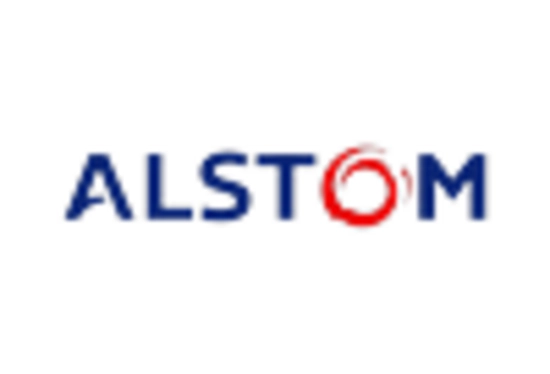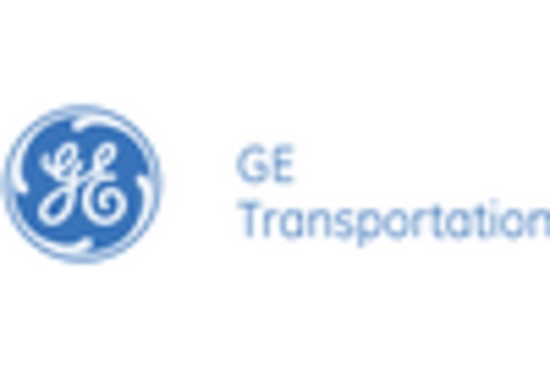The Rail Asset Management Market is currently characterized by a dynamic competitive landscape, driven by technological advancements and increasing demand for efficient rail operations. Key players such as Siemens (Germany), GE Transportation (United States), and Alstom (France) are at the forefront, each adopting distinct strategies to enhance their market positioning. Siemens (Germany) emphasizes innovation through its digital solutions, focusing on predictive maintenance and asset optimization. GE Transportation (United States) is leveraging its extensive experience in the sector to expand its service offerings, particularly in data analytics and IoT integration. Alstom (France) is pursuing strategic partnerships to bolster its capabilities in sustainable rail solutions, thereby aligning with global environmental goals. Collectively, these strategies not only enhance operational efficiencies but also intensify competition within the market.
In terms of business tactics, companies are increasingly localizing manufacturing to reduce costs and improve supply chain resilience. This approach is particularly evident in regions with burgeoning rail networks, where local production can significantly shorten lead times. The market structure appears moderately fragmented, with several players vying for market share, yet the influence of major companies remains substantial. Their ability to innovate and adapt to changing market demands shapes the competitive dynamics, fostering an environment where agility and responsiveness are paramount.
In August 2025, Siemens (Germany) announced the launch of its new digital rail platform, which integrates AI-driven analytics to enhance asset management capabilities. This strategic move is likely to position Siemens as a leader in the digital transformation of rail operations, enabling clients to optimize maintenance schedules and reduce downtime. The introduction of such advanced technologies could redefine operational standards across the industry, setting a benchmark for competitors.
In September 2025, GE Transportation (United States) unveiled a partnership with a leading tech firm to develop a comprehensive data analytics solution aimed at improving rail safety and efficiency. This collaboration underscores GE's commitment to leveraging cutting-edge technology to enhance its service offerings. By integrating advanced analytics into its operations, GE Transportation may significantly improve decision-making processes for its clients, thereby reinforcing its competitive edge in the market.
In July 2025, Alstom (France) secured a major contract for the development of a sustainable rail system in collaboration with a government entity. This initiative not only highlights Alstom's focus on sustainability but also reflects a broader trend within the industry towards environmentally friendly solutions. Such contracts are pivotal, as they not only enhance Alstom's market presence but also align with global sustainability goals, potentially attracting further investment and partnerships.
As of October 2025, the Rail Asset Management Market is witnessing a pronounced shift towards digitalization, sustainability, and AI integration. These trends are reshaping competitive strategies, with companies increasingly forming strategic alliances to enhance their technological capabilities. The competitive landscape is evolving from a focus on price-based competition to one centered on innovation, technology, and supply chain reliability. This transition suggests that future differentiation will hinge on the ability to deliver advanced, sustainable solutions that meet the evolving needs of the rail industry.


















Leave a Comment